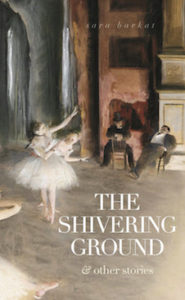< Return to Kahlil Gibran Poems
The Pomagranate
Once when I was living in the heart of a pomegranate, I heard a seed saying, “Someday I shall become a tree, and the wind will sing in my branches, and the sun will dance on my leaves, and I shall be strong and beautiful through all the seasons.”
Then another seed spoke and said, “When I was as young as you, I too held such views; but now that I can weigh and measure things, I see that my hopes were vain.”
And a third seed spoke also, “I see in us nothing that promises so great a future.”
And a fourth said, “But what a mockery our life would be, without a greater future!”
Said a fifth, “Why dispute what we shall be, when we know not even what we are.”
But a sixth replied, “Whatever we are, that we shall continue to be.”
And a seventh said, “I have such a clear idea how everything will be, but I cannot put it into words.”
Then an eight spoke—and a ninth—and a tenth—and then many—until all were speaking, and I could distinguish nothing for the many voices.
And so I moved that very day into the heart of a quince, where the seeds are few and almost silent.
—Kahlil Gibran
About Kahlil Gibran
Khalil Gibran (جبران خليل جبران) was a writer, visual artist, and poet with a prolific collection of work. He was born in 1883 in a village in the Mount Lebanon Mutasarrifate and in 1893 moved with his family to the United States where he enrolled in school in Boston, then went back home when he was fifteen to enroll in the Collège de la Sagesse. In 1902 he came back to Boston, and two years later his artwork was displayed for the first time. In 1905 he published his first book, and after that studied art in Paris for three years. Gibran wrote books in both Arabic and English, including poems, plays, fables, short stories, and political essays.
His cousin, Kahlil G. Gibran, a sculptor, described his work in this way. “Ignoring much of the traditional vocabulary and form of classical Arabic, he began to develop a style which reflected the ordinary language he had heard as a child in Besharri and to which he was still exposed in the South End [of Boston]. This use of the colloquial was more a product of his isolation than of a specific intent, but it appealed to thousands of Arab immigrants.” (Robin Waterfield, 1998) He was inspired by the King James Bible, the works of William Blake, whose drawings were in Gibran’s opinion “so far the profoundest things done in English.” (Joseph Ghougassian, 1973) Other inspirations included Francis Marrash (فرنسيس بن فتح الله بن نصر الله مرّاش), Walt Whitman, and Friedrich Nietzsche.

“Self Portrait and Muse” by Khalil Gibran
With visual art Gibran worked in oils, pencil, ink, watercolor, and gouache, and created more than seven hundred pieces of visual art. His work is featured in a number of museums, and his work The Prophet has been translated into more than 100 languages and has never been out of print, becoming popular in the American counterculture and New Age movement. The book was admired by Elvis Presley, John Lennon, Johnny Cash, David Bowie, Gilad Hochman (גילעד הוכמן) and Dana Al Fardan. Gibran has museums, memorials, schools, a garden, and a crater on Mercury named after him.
I hope you enjoyed The Pomagranate by Kahlil Gibran! If you liked The Pomagranate by Kahlil Gibran, you might enjoy more poems by him below.
< Return to Khalil Gibran Poems
“Stunning…from start to finish. Barkat is a fierce new voice.”

